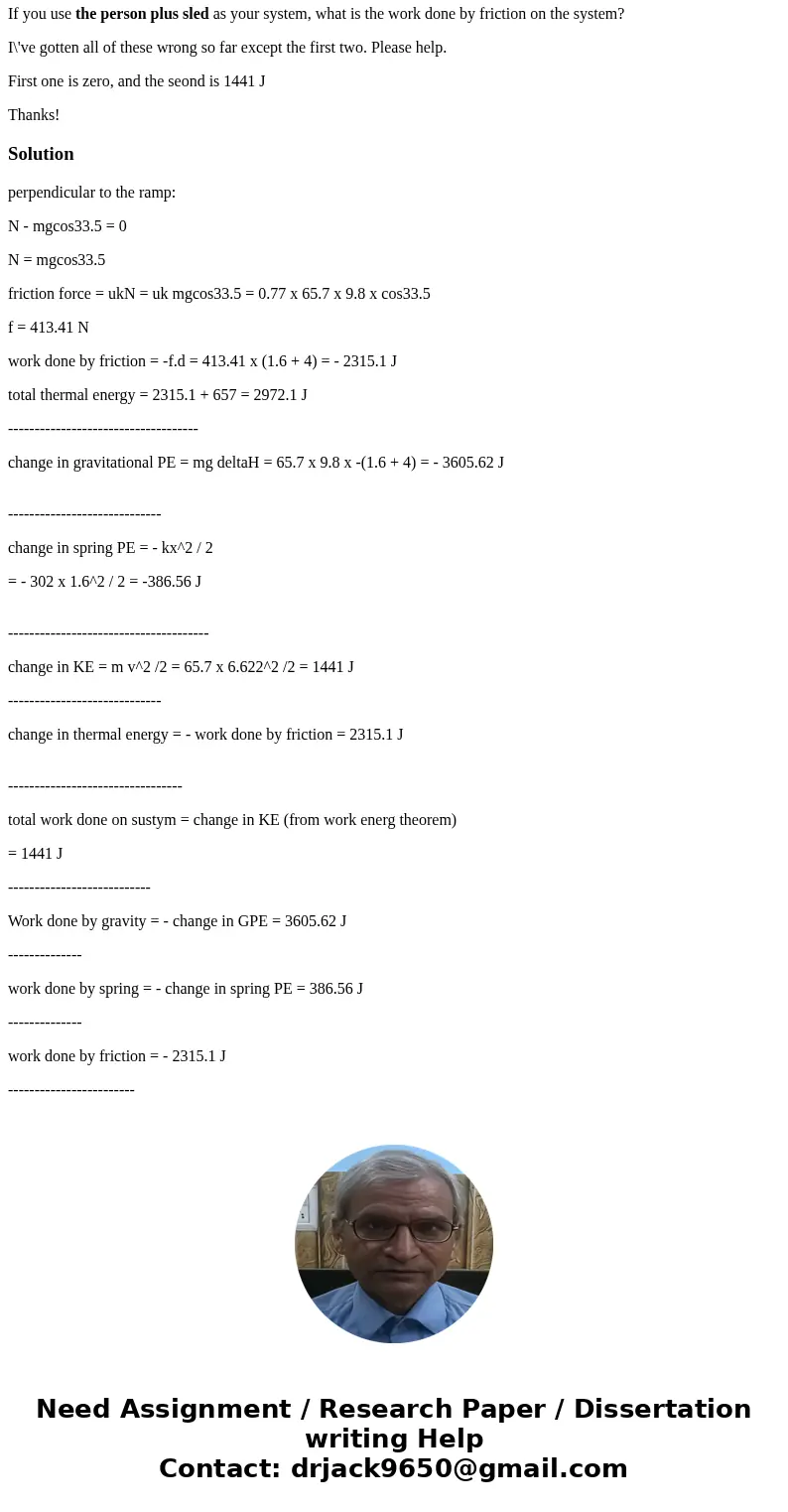An amusement park ride consists of a slide that is sloped an
An amusement park ride consists of a slide that is sloped an an angle of 33.5 degrees with respect to the vertical with a spring located at the top of the ramp with a spring constant of 302 N/m. A person will sit in a sled on the ramp, and then the spring is compressed by the operator an amount of 1.6 m. The spring is then released by the operator and person plus sled are pushed down the ramp by the spring. The sled will become separated from the spring once the spring returns to its rest length. Also, there is friction between the sled and the ramp which has a coefficient of kinetic friction of 0.77. Consider the person and sled as one object with a total mass of 65.7 kg. After the person has traveled down the ramp a distance 4.0 m, the person will have a speed of 6.622 m/s, the spring has returned to its rest length and you determine that 657 J of thermal energy went into the ramp as the person travels this distance.
If you use everything as your system, what is the work done on the system?
0.000 J
If you use everything as your system, what is the change in kinetic energy of the system?
1.441×103 J
If you use everything as your system, what is the change in thermal energy of the system? Note that there is friction under the spring as well, so the friction will be present for the entire displacement.
If you use everything as your system, what is the change in gravitational potential energy of the system?
If you use everything as your system, what is the change in spring potential energy of the system?
If you use the person plus sled as your system, what is the change in kinetic energy of the system?
If you use the person plus sled as your system, what is the change in thermal energy of the system?
If you use person plus sled as your system, what is the total work done on the system?
If you use the person plus sled as your system, what is the work done by gravity on the system?
If you use the person plus sled as your system, what is the work done by the spring on the system?
If you use the person plus sled as your system, what is the work done by friction on the system?
I\'ve gotten all of these wrong so far except the first two. Please help.
First one is zero, and the seond is 1441 J
Thanks!
Solution
perpendicular to the ramp:
N - mgcos33.5 = 0
N = mgcos33.5
friction force = ukN = uk mgcos33.5 = 0.77 x 65.7 x 9.8 x cos33.5
f = 413.41 N
work done by friction = -f.d = 413.41 x (1.6 + 4) = - 2315.1 J
total thermal energy = 2315.1 + 657 = 2972.1 J
------------------------------------
change in gravitational PE = mg deltaH = 65.7 x 9.8 x -(1.6 + 4) = - 3605.62 J
-----------------------------
change in spring PE = - kx^2 / 2
= - 302 x 1.6^2 / 2 = -386.56 J
--------------------------------------
change in KE = m v^2 /2 = 65.7 x 6.622^2 /2 = 1441 J
-----------------------------
change in thermal energy = - work done by friction = 2315.1 J
---------------------------------
total work done on sustym = change in KE (from work energ theorem)
= 1441 J
---------------------------
Work done by gravity = - change in GPE = 3605.62 J
--------------
work done by spring = - change in spring PE = 386.56 J
--------------
work done by friction = - 2315.1 J
------------------------


 Homework Sourse
Homework Sourse